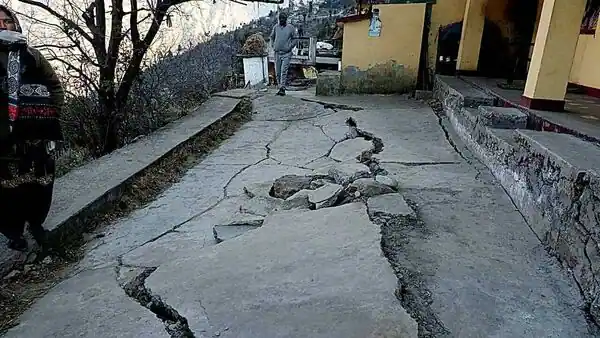
The hill town of Joshimath is placed around 1,875 meters above sea level in the north-western district of Chamoli in Uttrakhand, INDIA.
The hill town holds relevance due to multiple factors, and among many, the first vital relevance is that the city serves as a base camp for mountain expeditions. Also, the town is strategically important as it serves as an access point for the Indo-China border. Finally, the town has a substantial cultural relevance as it is among the four institutions that form the “Char Dham”- a belief every Hindu believes in fulfilling in their lifetime.
A town which is important strategically and culturally for a nation and its citizens is making headlines for all the wrong reasons. The year 2023 has not brought much good news for the residents of Joshimath, as they witnessed “cracks” on the walls of their houses. Fields and roads are splitting wide open and oozing brown and muddy water, the source of which is still unknown.
The cracks and the gaps have given Joshimath town a new name. The same is named “The Sinking Town”, thereby forcing the authorities to mark the area “in danger”, which is prone to landslides and is further a “land subsistence area.”, ultimately causing the residents to vacate their homes and shift to safer places.
Nevertheless, what is the reason behind the sinking of Joshimath Town? Is it the unprecedented level of development in the area, OR is it the location where the town is located which makes it a landslides prone zone? OR is it the impact of climate change? OR is it a mix of everything mentioned above?
Experts believe that all the above factors account for the tragedy that the Sinking Town is facing. Joshimath is located on the debris of an ancient landslide; thus, the hill town cannot bear the brunt of rampant construction and development along with Nature’s fury. The hill town has faced multiple natural calamities since the 1970s, and experts believe that the town is located in a fragile area. Climate change has also been a multiplier contributing massively to the Joshimath crisis.
The warming temperatures, melting glaciers and changing monsoon patterns led to increased disasters causing frequent landslides and floods. Also, the rampant development and the various projects in the area contribute to the disaster.
The Himachal Pradesh State Disaster Management Team, points out that the mean surface temperature of the state has risen by about 1.6°C in the last century. Additionally, the fragile ecosystem of the state, which is located in Seismic Zone V or IV, an outpour of tourists, growth in the local population, a considerable amount of deforestation, and poor drainage system are acting as multiplier effects in the current crisis faced by the Sinking Town.
The situation has been a wake-up call for the locals, authorities and experts. It clearly states that no one is above Nature, and it is always Nature that has the last call!
Despite all the devastation and irreplaceable damage, we must learn our lessons and proceed with growth and development activities keeping in mind the topography and the overall ecosystem of the given area. It is high time that we realize that we are messing up with our environment, and the devastation and damage that will happen from hereon will be irreplaceable and irrevocable.
According to experts, we need to formulate stringent strategies and laws and consider Nature an important stakeholder while implementing our strategy so that there is no other Joshimath in the coming times.
Let us act now and survive peacefully and pray that the hill town stays in the crisis and stands tall with all its glory and relevance!


